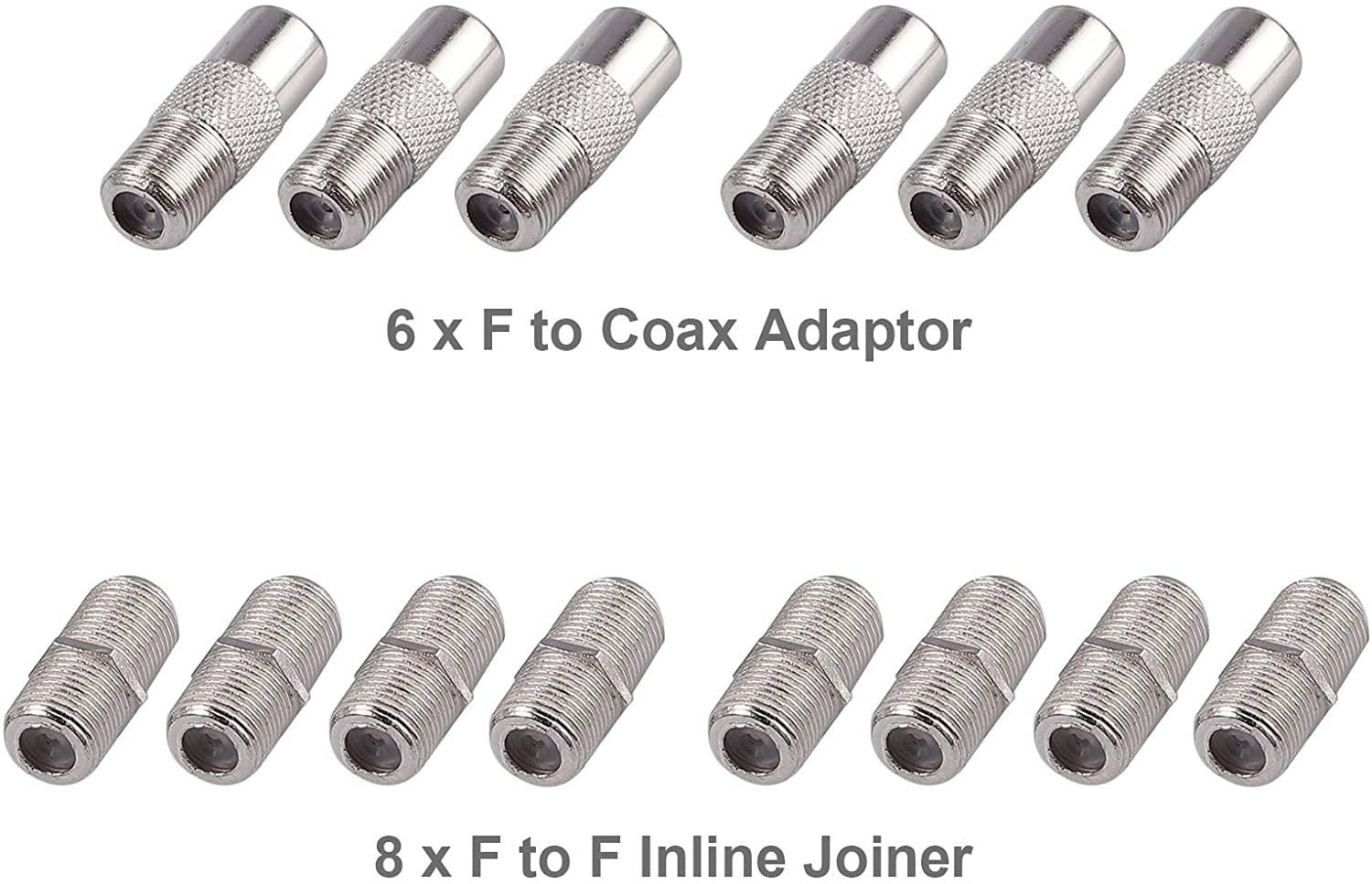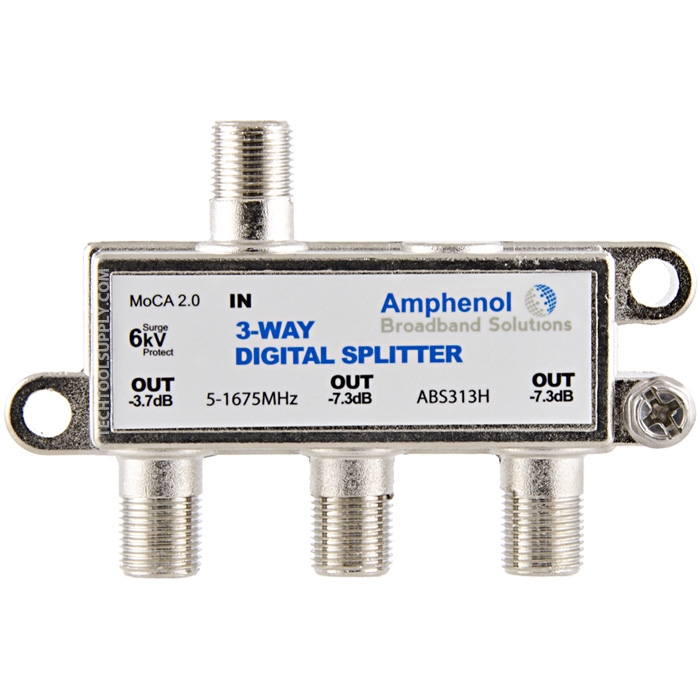

- #Electronic producers of moca cable splitters install
- #Electronic producers of moca cable splitters tv

Typically coax splitters allow lots of signal to pass from the "in" to the "outs" and vice-versa, but they often greatly attenuate (isolate) the signal between the "outs".
#Electronic producers of moca cable splitters install
So go buy and install a MoCA POE filter if you haven't already. AND as a HUGE BONUS, rather than just absorbing the frequencies they filter, they actually reflect your own MoCA signals back into the rest of your home's wiring, which helps the signal cross splitters and generally improves signal strength. These "MoCA POE" filters allow the lower frequency (DC to 1GHz) CATV signals to pass into your home, but block higher frequencies (1GHz and above as used by MoCA), keeping your neighbors MoCA from interfering with yours, and vice-versa. It's important to put a low-pass filter at the "Point Of Entry" (POE) where the CATV line comes into your home, before the first splitter. If you really need a CATV signal booster, you may be able to find a MoCA friendly one nowadays.
#Electronic producers of moca cable splitters tv
So TV signal amplifiers on your in-home coax wiring can be a MoCA killer. less than 850MHz or 1GHz), and may filter out frequencies above that. TV signal boosters (amplifiers) often only amplify frequencies traditionally used by CATV channels (i.e. You could test it yourself if you were a EE or RF nerd with some lab equipment. If your splitters don't say a rating or say a rating that doesn't go up to 2GHz, that doesn't mean they don't pass those higher frequencies very well, it just means no one designed or tested them to do that, so you don't know. It is helpful to make sure your splitters are rated for 5MHz (or below) to 2GHz (or above). Coax cable attenuation ratings are often given in decibels per 100 feet. In general, CATV is expected to use frequencies from 5MHz up to 850 MHz or 1GHz, and MoCA is designed to use frequencies above that, up to 1.6GHz, and perhaps up to 2GHz in the future.ĭifferent cable designs can attenuate different frequencies to different degrees, so it would be helpful if you knew how much your coax cables attenuate the signal at frequencies between 1GHz and 2GHz. The MoCA specs allow for MoCA devices to use different frequency bands in order to avoid the frequency bands used by the CATV or satellite TV signals that might also be on the same coax in some homes. The fewer splitters your MoCA signals have to to go through, the better. In fact, RG-59 should be avoided because its attenuation is too high. In general, something like quad-shielded RG-6 is going to work better than RG-59. Topologically, it's expected to be a tree made by a single splitter or a small hierarchy of splitters. MoCA is designed to work over the 75Ω coaxial TV antenna / cable TV (henceforth "CATV") / satellite TV cable you already have in your home. Using speedtest-cli I get ~850 on ethernet. But when testing with the MoCA bridge, it caps around 150. Using iperf3, I can get ~950 mbps to any of my VMs when plugged into the switch. As for coax cables, the only one I can view right now says catv 18 AWG on it.


 0 kommentar(er)
0 kommentar(er)
